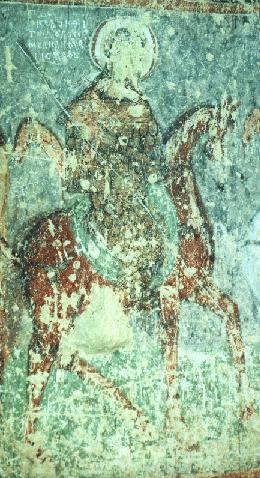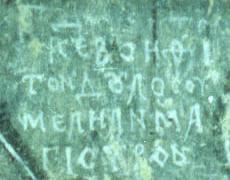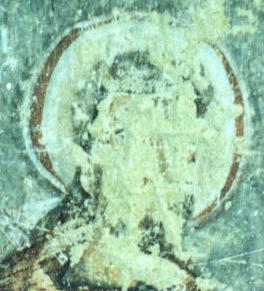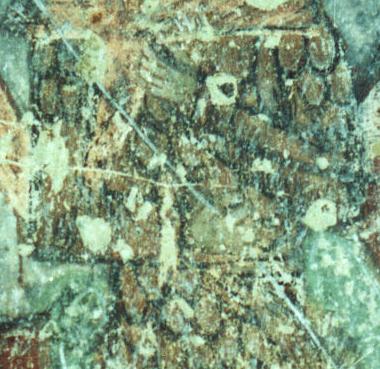 |
The two cavalry figures at the end of the frieze seem to bear little relationship to the saints who precede them,
and Jerphanion believes on the basis of the inscription beside this figure that rather than martyrs,
these two horsemen represent donors who paid toward the establishment and/or embellishment of the Dovecote Church.

The inscription reads
K[YRI]E BOETHI
TON DOULON SOU
MELIAN MA
GISTRON
which translates roughly as:"Lord, save your servant, Magister Melias" (Magister was a rank in the Byzantine hierarchy
|
|






